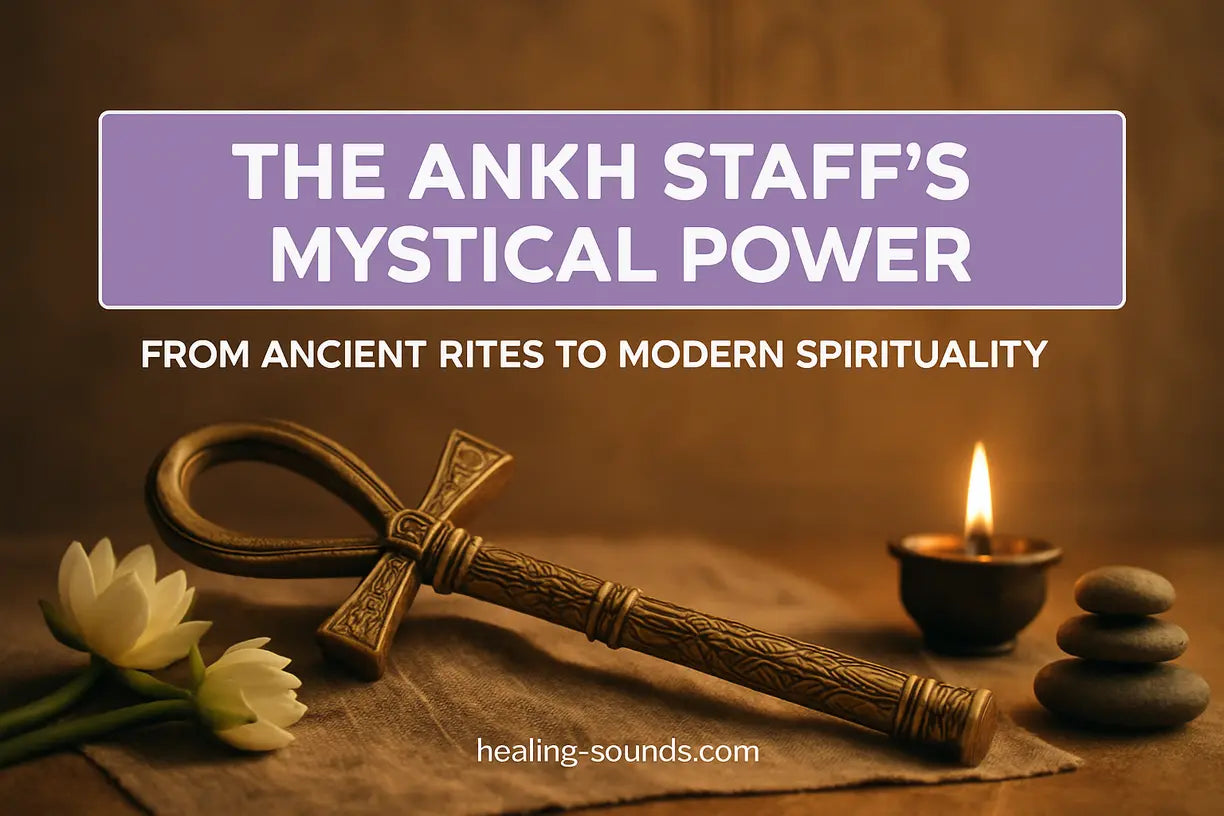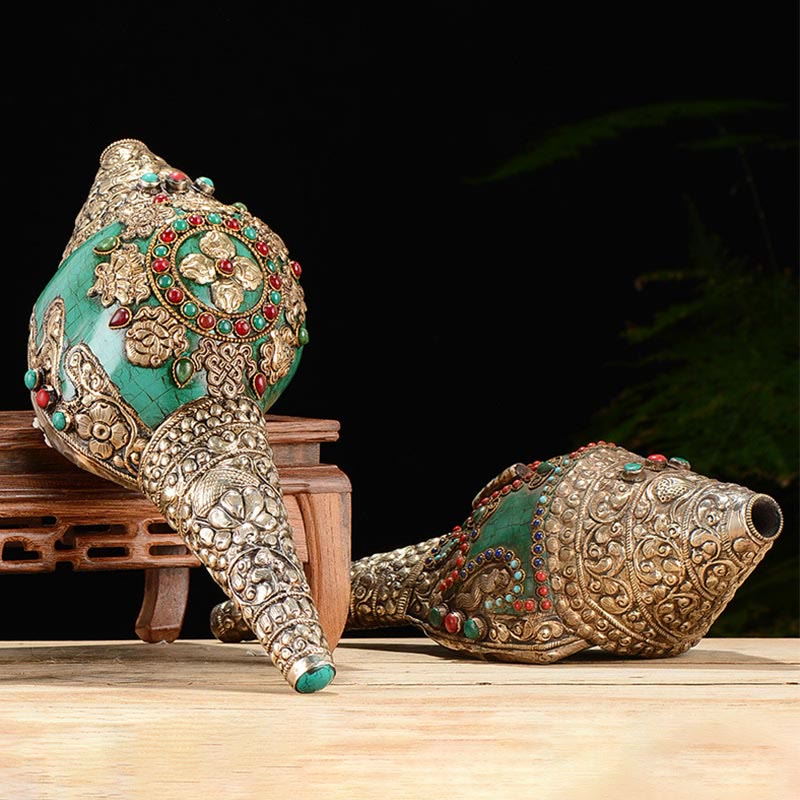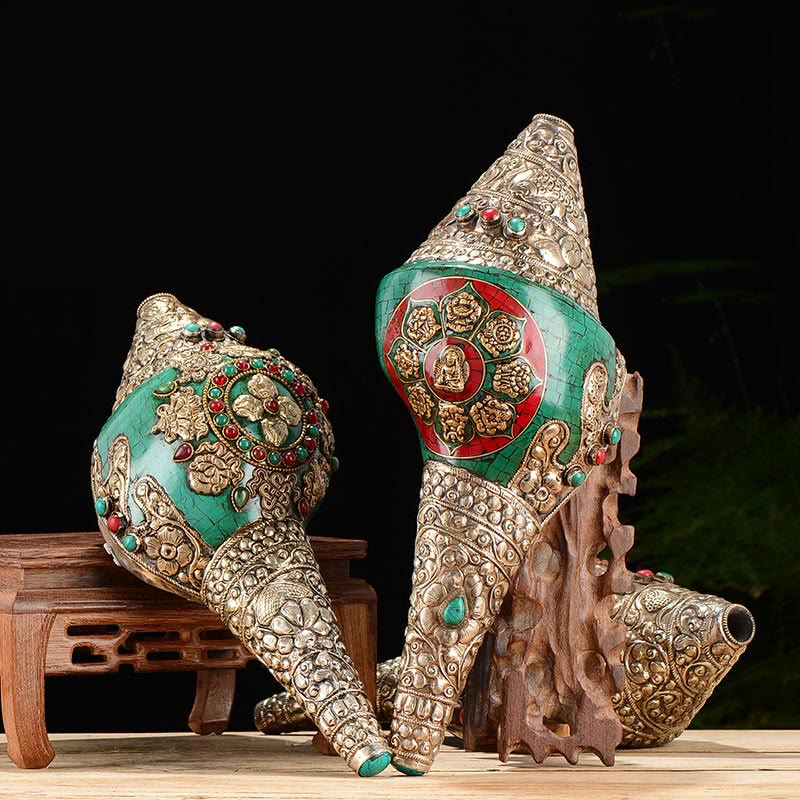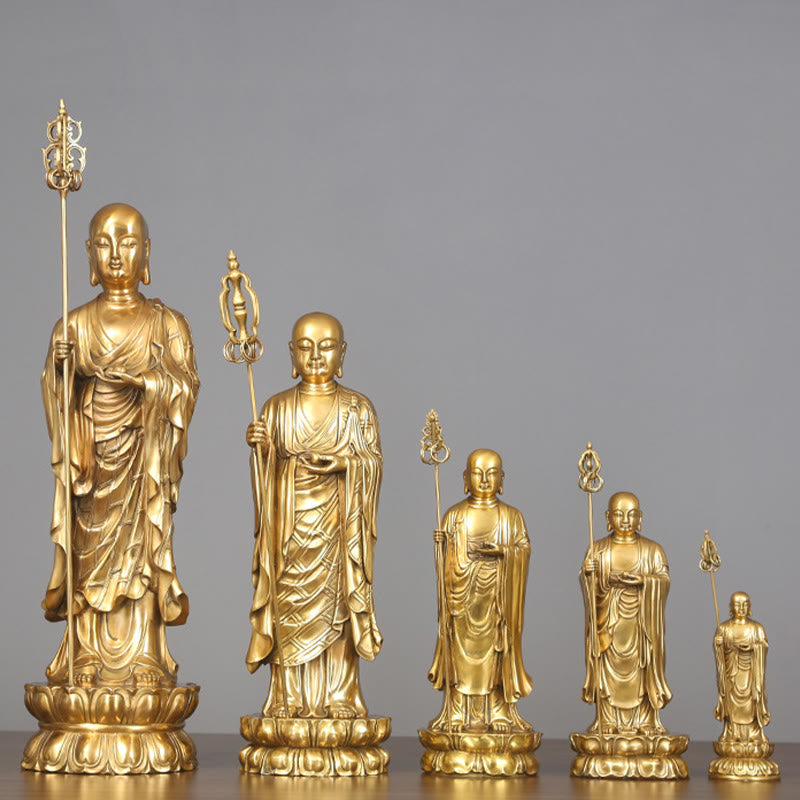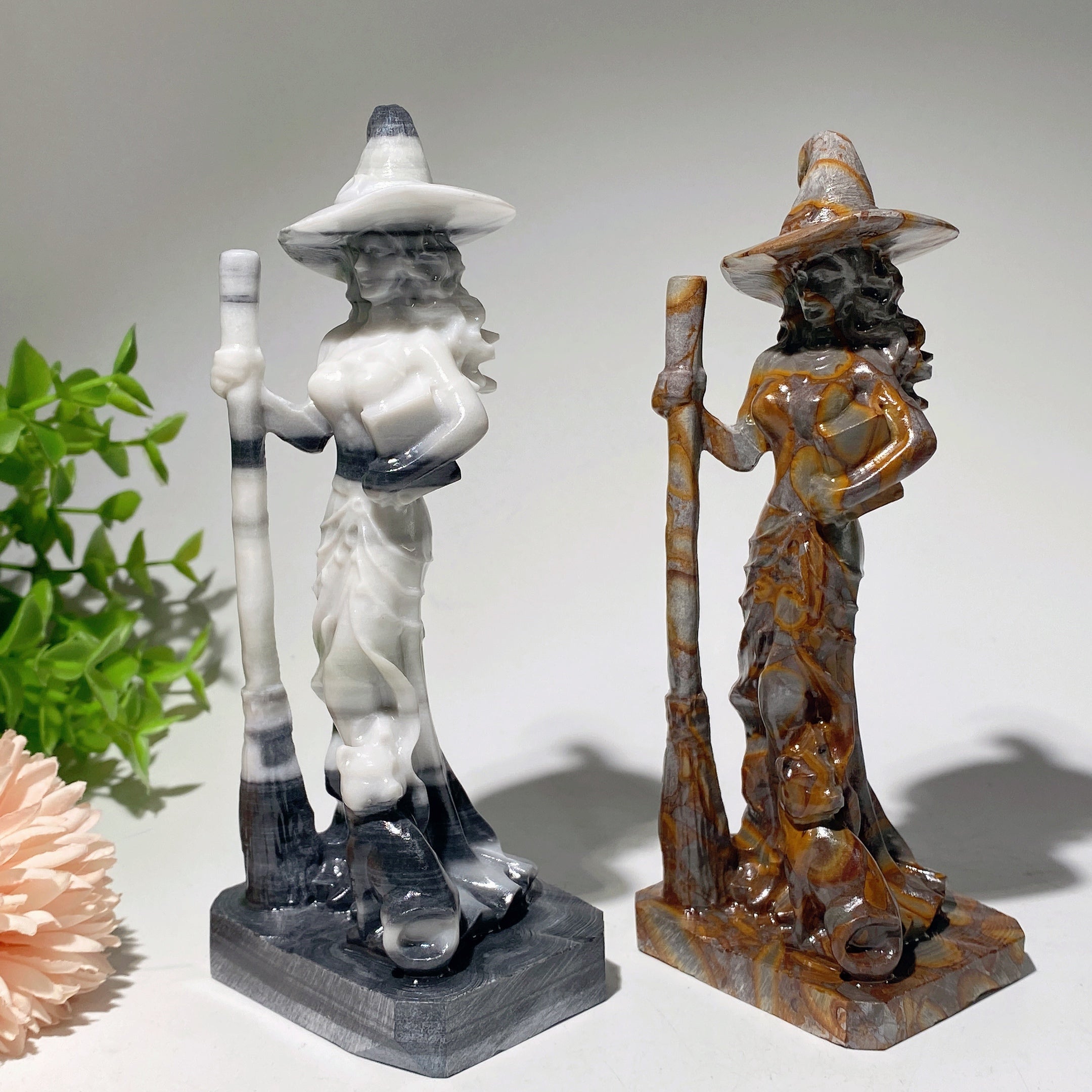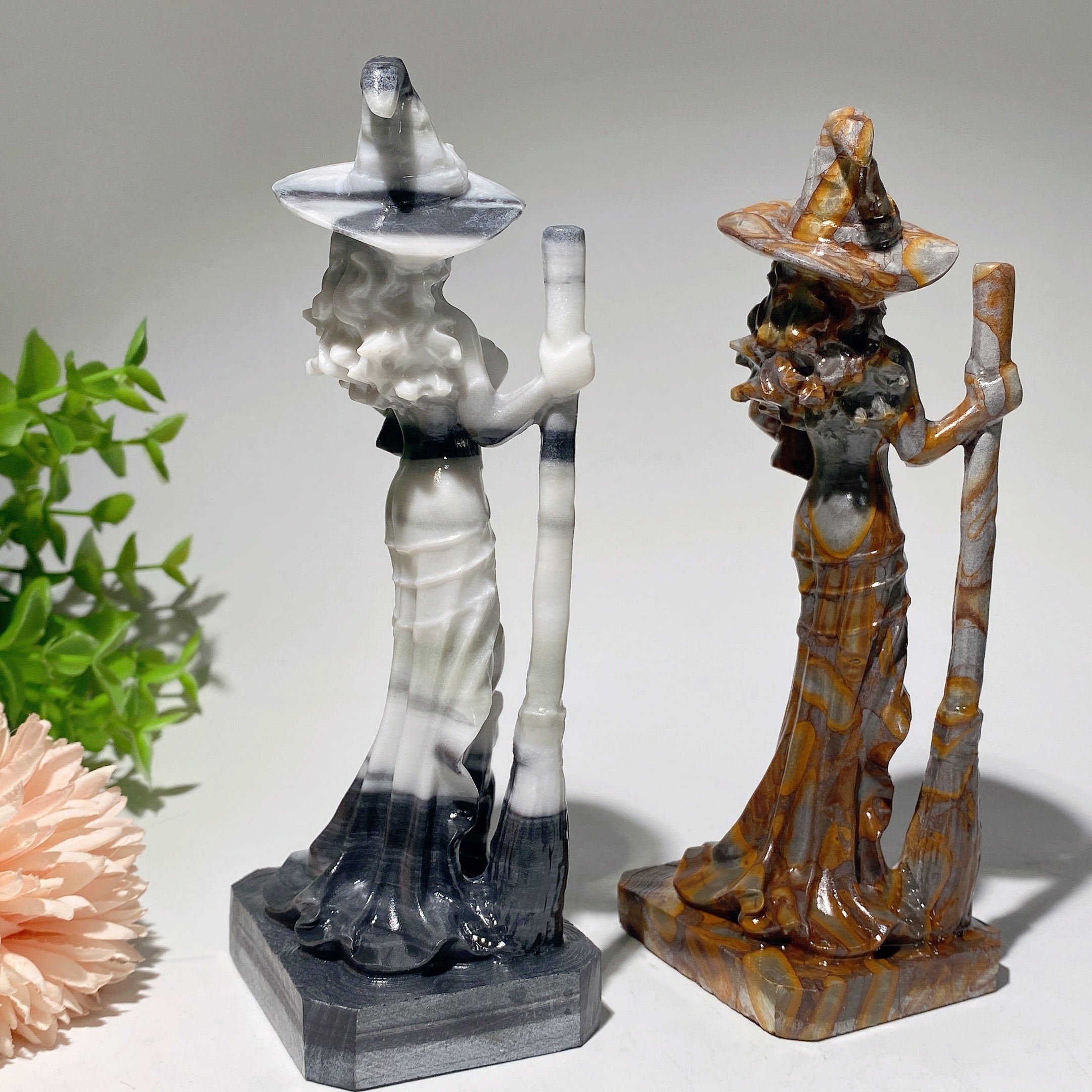Qu'est-ce que le bâton d'Ankh ? Dévoiler le sceptre de vie
Fondamentalement, le bâton ankh , souvent appelé sceptre ankh, est une manifestation physique du pouvoir divin. Il associe la croix ankh en forme de boucle, symbole de vie éternelle et d'union des principes féminin et masculin, à la longue tige d'un sceptre, symbole d'autorité et de domination. Cet objet n'était pas destiné au commun des mortels ; il était réservé aux divinités, aux pharaons et aux prêtres de haut rang lors des cérémonies du temple. Dans d'innombrables peintures et sculptures funéraires, des dieux et déesses comme Isis, Osiris et Rê sont représentés tenant un bâton ankh. Ils l'offrent souvent au pharaon, symbole du don de la vie, du droit divin de régner et de la longévité. Le bâton servait de canal, de lien direct entre le souverain mortel et les dieux immortels, renforçant le rôle d'intermédiaire divin du pharaon sur Terre. Sa présence dans un rituel signifiait que les actes étaient approuvés par les dieux eux-mêmes, conférant à chaque action une importance sacrée.
Les principales utilisations cérémonielles du bâton Ankh dans l'Égypte ancienne
La fonction cérémonielle du bâton ankh était multiple et jouait un rôle crucial dans la vie religieuse et royale de l'Égypte antique. Ses usages dépassaient largement le simple symbolisme, agissant comme un élément clé de nombreux rites sacrés.Un conduit pour la puissance divine et le souffle de vie
L'une des utilisations cérémonielles les plus emblématiques de l'ankh était l'octroi de la vie. Dans de nombreuses représentations, une divinité porte l'anse de l'ankh aux narines d'un pharaon, un acte rituel symbolisant le transfert du « souffle de vie ». Il ne s'agissait pas d'une simple métaphore ; il s'agissait d'un transfert littéral d'essence divine, assurant la vitalité, la santé et l'éternité du roi. Lors des cérémonies au temple, un grand prêtre pouvait brandir un bâton ankh pour sanctifier les offrandes ou purifier un lieu sacré, canalisant ainsi l'énergie divine pour bénir les cérémonies.Symbole de l'autorité divine et de la royauté
Symbole de pouvoir, le bâton égyptien était indispensable lors des cérémonies royales. Lors du couronnement d'un pharaon, le sceptre ankh était un élément central de son insigne, signifiant que son autorité n'était pas d'origine humaine, mais conférée par les dieux. En tenant le bâton, le pharaon était visuellement et spirituellement lié à la lignée divine des souverains qui l'avaient précédé. Cette démonstration d' autorité divine consolidait sa position et imposait le respect et l'obéissance de ses sujets.Un outil dans les rites funéraires et le passage vers l'au-delà
Le lien entre l'ankh et la vie éternelle faisait de ce bâton un outil essentiel des rituels funéraires. On le croyait comme une clé permettant d'ouvrir les portes du monde souterrain, guidant l'âme du défunt en toute sécurité à travers le périlleux voyage vers l'au-delà. Le bâton ankh apparaît souvent dans des scènes du Livre des Morts, où il est utilisé par des dieux comme Anubis pour assurer la résurrection du défunt. Sa présence dans les tombes constituait une puissante forme de protection magique, destinée à garantir l'éternité à l'âme du défunt. Pour comprendre la signification profonde de l'ankh, il est utile d'explorer le symbole au cœur du bâton. La vidéo suivante offre un aperçu approfondi des origines mystérieuses et des significations de ce puissant symbole de l'Égypte ancienne.
Pour comprendre la signification profonde de l'ankh, il est utile d'explorer le symbole au cœur du bâton. La vidéo suivante offre un aperçu approfondi des origines mystérieuses et des significations de ce puissant symbole de l'Égypte ancienne. Le pouvoir symbolique durable du bâton Ankh
Au-delà de ses fonctions cérémonielles spécifiques, le bâton ankh possède une signification spirituelle et philosophique riche qui résonne encore aujourd'hui. Sa puissance réside dans les concepts universels qu'il représente.- Vie éternelle : Sa signification première, représentant l'immortalité et la continuité de l'existence au-delà du royaume physique.
- Union des contraires : Le sommet en boucle (principe féminin) et la base en T (principe masculin) symbolisent la création, l'équilibre et l'harmonie cosmique.
- Autorité divine : Elle représente le pouvoir de gouverner et d’agir avec la sanction d’une source spirituelle supérieure.
- Protection spirituelle : La forme ankh elle-même est une puissante amulette protectrice, agrandie sous forme de bâton.
Intégrer l'énergie du bâton Ankh dans la pratique spirituelle moderne
Nul besoin d'être un pharaon pour se connecter à l'énergie profonde du bâton ankh cérémoniel . Les personnes en quête spirituelle moderne peuvent puiser dans son pouvoir symbolique pour enrichir leurs rituels et leur développement personnel. Ses principes de vie, d'autorité et de protection sont universels. Envisagez d'utiliser le symbole ankh comme point focal pour la méditation. Visualiser un bâton ankh peut vous aider à vous connecter à votre propre autorité intérieure et à votre force vitale. Demandez-vous : où dois-je exercer mon pouvoir dans ma vie ? Comment puis-je mieux équilibrer les énergies masculines et féminines en moi ? Créer un autel personnel est une autre façon puissante de travailler avec cette énergie. Un autel est un espace sacré pour vos outils, symboles et intentions spirituels. Placer un objet qui représente les principes de l'ankh, comme une statue, une sculpture ou une représentation symbolique, peut transformer votre espace en un puissant centre de manifestation et de réflexion. Il devient un rappel visuel de votre connexion à l'éternel et de votre pouvoir de façonner votre propre réalité. Pour en savoir plus sur le rôle des bâtons dans les traditions spirituelles, pensez à explorer des sources connexes comme l' histoire des bâtons magiques , qui fournit un contexte plus large sur leur utilisation dans différentes cultures.
Pour en savoir plus sur le rôle des bâtons dans les traditions spirituelles, pensez à explorer des sources connexes comme l' histoire des bâtons magiques , qui fournit un contexte plus large sur leur utilisation dans différentes cultures.Canaliser le pouvoir symbolique dans votre espace sacré
$299.90
$429.90
Incarnez le symbolisme de protection et de pouvoir du bâton avec cette statue de Bouddha en cuivre représentant un bâton de moine. En savoir plus ➔
$189.90
$289.90
Canalisez la sagesse mystique : les figurines de sorcières avec des bâtons sculptés évoquent la tradition cérémonielle et spirituelle du bâton ankh. En savoir plus ➔
Embrassez le pouvoir de l'Ankh
Le bâton ankh témoigne avec force de la sophistication de la spiritualité de l'Égypte antique. Bien plus qu'un symbole, c'était un outil cérémoniel utilisé pour canaliser la vie, affirmer l'autorité divine et garantir un passage sûr vers l'éternité. Son pouvoir durable réside dans son symbolisme universel de vie, d'équilibre et de protection. En comprenant son histoire et ses usages cérémoniels, nous pouvons nous connecter plus profondément à cet emblème sacré et intégrer son énergie dynamisante à notre vie. Qu'il soit utilisé en méditation, placé sur un autel ou simplement conservé à l'esprit comme une source de force, l'esprit du bâton ankh continue d'offrir le « souffle de vie » à tous ceux qui le recherchent.Questions fréquemment posées sur le bâton Ankh
Le bâton ankh, ou sceptre ankh, est un objet cérémoniel de l'Égypte antique qui associe le symbole ankh (représentant la vie) à un bâton ou sceptre (représentant le pouvoir et l'autorité). Il était principalement utilisé par les divinités et les pharaons lors de rituels religieux et royaux pour symboliser leur pouvoir divin de donner et de maintenir la vie.
Oui, il est généralement admis que le symbole ankh est porté par tous. Aujourd'hui, il est largement perçu comme un symbole de vie, de spiritualité, d'héritage africain et de reconnaissance culturelle. Symbole ancien, antérieur aux religions modernes, il est porté par des personnes de toutes croyances pour se connecter à ses significations universelles de vie, de protection et d'équilibre.
Le sceptre ankh symbolise l'autorité divine et le pouvoir sur la vie et la mort. Il représente la capacité de son porteur non seulement à régner sur le monde physique, mais aussi à accorder et à maintenir la vie, un pouvoir qui lui vient directement des dieux. C'est un puissant emblème de souveraineté, de vie éternelle et d'équilibre cosmique.
Oui, de nombreux chrétiens portent l'ankh. Les premiers chrétiens coptes d'Égypte l'ont adopté comme forme de croix, appelée « crux ansata » (croix à anse), car sa forme était similaire et sa signification de « vie » s'accordait avec la promesse de vie éternelle du Christ. Pour eux, il symbolisait la résurrection et l'immortalité par le Christ.
Dans la culture égyptienne antique, le bâton ankh revêtait une signification profonde, car il représentait la source ultime du pouvoir et de l'existence. Outil essentiel des cérémonies nationales et religieuses, il symbolisait le droit divin du pharaon à gouverner, la capacité des dieux à accorder la vie et la clé de l'accès à l'au-delà. Sa présence confirmait l'ordre cosmique sur lequel leur société était bâtie.

